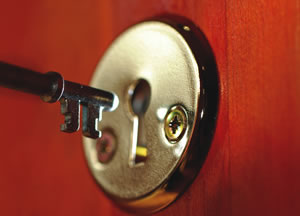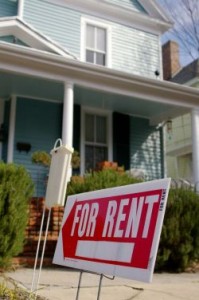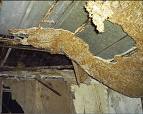Posted by Teresa on October 26, 2009 under Landlord Tips | 
 It’s a good idea to prepare for losing a tenant before the lease is actually up. Go to your file cabinet and pull the tenant’s file for review. Make sure you have all the necessary paperwork in order, including any notices required if you do not wish to renew the lease. Or, if the tenant has informed you that they will not be renewing, then start preparing for your new tenant.
It’s a good idea to prepare for losing a tenant before the lease is actually up. Go to your file cabinet and pull the tenant’s file for review. Make sure you have all the necessary paperwork in order, including any notices required if you do not wish to renew the lease. Or, if the tenant has informed you that they will not be renewing, then start preparing for your new tenant.
Plan for at least a one- to two-week window between tenants. Some landlords have rented units out before the previous tenant has moved—which can be a recipe for disaster! You have no control over when or whether a tenant will actually vacate your property. What will you do if the new tenant tries to move in, and the old one refuses to leave?
In this between-tenant time frame, you will be busy! Schedule the final walk-through and move out inspection with the old tenant for immediately after they have moved their belongings out and the unit is completely empty. You don’t want to be in the position where the tenant has moved away and cannot make it back for the move out inspection. Both parties should take part in this process together, to avoid distrust or false accusations of damages.
Once the move-out inspection is over, you can quickly assess damages and plan for any repairs, repainting, or replacing of fixtures, flooring, and walls. A thorough cleaning, pest inspection and treatment, and carpet cleaning can be scheduled at this time.
At this stage, you’ll know how much time you’ll need before you can put a new tenant in the unit. If you haven’t lined up a new tenant, increase your advertising and word-of-mouth efforts to speed up the process.
You can show the rental property while repairs and cleaning are being done; emphasize to potential tenants that the unit will be 100% habitable before they move in.
Remember to professionally
screen all tenants as part of your application process. For more landlord resources, including forms and information on
tenant screening, turn to
E-Renter.com. .
Posted by Teresa on October 20, 2009 under Landlord Tips, Marketing for Landlords, Rents and Deposits | 
 If you’re a landlord with a vacancy or two, fall can be a difficult time or year to fill them. Coupled with the renter’s market we’re in, you could need to think more creatively to turn those vacancies into occupied rentals. Here are some great ideas to try if you want to attract great tenants:
If you’re a landlord with a vacancy or two, fall can be a difficult time or year to fill them. Coupled with the renter’s market we’re in, you could need to think more creatively to turn those vacancies into occupied rentals. Here are some great ideas to try if you want to attract great tenants:
Lower the rent: lowering your rent might be the last thing you want to do, but sometimes it’s necessary. Do you know what the market rents are for similar properties in your area? If you haven’t checked them out lately, you may find that they’ve dropped—while you’re still asking a previum for your property. HUD publishes the Fair Market Rents for every metropolitan area in the United States, which is accessible on their website: http://www.huduser.org.
Landlords can also check out rentometer.com, which uses a proprietary algorithm to tell you if the rent you are charging for a property is too low, way too high, or reasonable. Just enter the address, number of bedrooms, and rent you are considering, and you’ll get an idea of what other units in the neighborhood are renting for. Smart tenants know. You should, too.
Waive one month’s rent: If your rent is where it should be, or you don’t want to set the precedent of lowering it, offer a free month’s rent to a qualified tenant. Mathematically, it could work out the same for your bank account, but psychologically, “free” is a major enticement to the tenant. It’s up to you to give the free month up front, in the middle, or at the end of the lease.
Upgrade or pray the utilities: If your rental property has basic cable, offer to pay for an upgrade to premium. Or give the tenant high-speed wireless Internet access for six months or a year. You could even pay the water bill, with a monthly dollar limit to discourage waste.
Replace the carpet, blinds, or an old appliance: If you have a great prospective tenant that you’re afraid will walk away, offer new carpeting if your unit needs it, or upgraded mini-blinds, or install a new stove or refrigerator. Most of these upgrades can be amortized over several years’ worth of tenants—but might be just the thing to entice one to move in now!
Posted by Teresa on October 16, 2009 under Landlord Paperwork and Forms, Landlord Tips | 
 Landlords are legally required to provide tenants with habitable living space. That means you provide working heating, water, plumbing and electrical systems, a roof that doesn’t leak, floors that aren’t rotten, and common areas that are safe for everyone.
Landlords are legally required to provide tenants with habitable living space. That means you provide working heating, water, plumbing and electrical systems, a roof that doesn’t leak, floors that aren’t rotten, and common areas that are safe for everyone.
These are the obvious factors. Depending on where you live, hidden dangers could be lurking in your rental property, threatening your tenants and costing you money to repair. Here are some environmental health hazards every landlord should know about:
Radon: This colorless, odorless, tasteless gas is a major cause of lung cancer. The EPA estimates radon contributes to 21,000 lung cancer deaths per year in the U.S. (2nd only to smoking). Radon occurs naturally in the soil, and can seep into houses—and stay there if the house is highly insulated or poorly ventilated. Landlords are not required to test for radon, but if your property is in an area with historically high levels of radon, you should consider it. Ask your local housing authority for more information.
Mold: Molds are everywhere, and some people are sensitive to even small amounts of airborne mold spores. But when they accumulate in large quantities, molds can cause allergic reactions and respiratory problems—or even neurological problems and death. Wet conditions, from floods, humidity, plumbing leaks, or rainfall, can cause mold to grow. That’s why it’s important to inspect your rental properties often, and to repair or replace water-damaged floors, ceilings, and walls immediately. Educate your tenants about the hazards of allowing water to gather in bathrooms and kitchens, and remind them to report mold or mildew immediately. Keeping the lines of communication open with your tenants can keep everyone safer.
Asbestos: Asbestos is a harmful substance used in building materials such as insulation, tiles, and vinyl flooring, prior to 1981. OSHA requires owners of rental properties built before then to notify contractors and maintenance workers that asbestos may be present. Owners of these older homes should consider having them professionally tested for asbestos. Check OSHA’s website for more information.
Lead: Lead-based paint can be a real problem for owners of older properties. Although banned in 1978, it could still present in older rental units. The paint itself is not a health hazard until it cracks, peels, or turns to chalk with age. And sanding or scraping it releases lead dust, which is a serious health hazard, especially to young children. Federal law requires rental property owners to disclose any known presence of lead-based paint and provide all tenants with copies of records pertaining to the presence of lead-based paint.
CO: Carbon monoxide (CO) is a toxic gas produced by incomplete combustion of fossil fuels: oil, natural gas, wood, coal, and gasoline. In homes, the major sources of CO are fossil fuel burning furnaces, boilers, water heaters and fireplaces. Every year, carbon monoxide poisoning kills 500 people. Most could have been saved with a properly working carbon monoxide detector. If you are a landlord, your state may require carbon monoxide detectors to be installed and maintained in your rental units. But keeping your tenants safe is the right thing to do, whether or not you are required by law to install detectors.
Remember, you are within your rights when
screening tenants prior to leasing. For more landlord resources, including forms and information on
tenant screening, turn to
E-Renter.com. You’ll know that you have the best possible tenants when you
prescreen tenants.
Posted by Teresa on October 12, 2009 under Landlord Tips | 
 Landlords often share their ideas for maintaining and improving their properties without spending a fortune. Tenants do not always take as much care with rental property as landlords would like, so it makes sense to keep prices in mind when planning maintenance or improvements. And, since most everyone seems to be budget-minded these days, we’re passing on some of the best ideas we’ve seen lately. Perhaps we can help you save some cash while keeping your rental property in great condition!
Landlords often share their ideas for maintaining and improving their properties without spending a fortune. Tenants do not always take as much care with rental property as landlords would like, so it makes sense to keep prices in mind when planning maintenance or improvements. And, since most everyone seems to be budget-minded these days, we’re passing on some of the best ideas we’ve seen lately. Perhaps we can help you save some cash while keeping your rental property in great condition!
Supply inexpensive mini-blinds for the windows. While this will require a small investment up front, landlords save in the long run, because tenants will not be installing hardware, drilling into window frames, ruining the wood work, or covering windows with unattractive bed sheets, blankets, or other unsightly coverings. These mini blinds are easily cleaned or replaced between tenants.
Install your own cabinet and shelf liner. It might seem like a lot of work, but it’s better than cleaning or repainting the insides of all the cabinets. After the tenant moves out, just strip the old paper and replace it with new. The new tenant will appreciate it, too. Alternatively, you can buy rolls of clearance or inexpensive shelf paper and leave them for the tenant to install.
Hit the dollar stores for cabinet pulls, switch plate covers, and vinyl shower curtain liners. Shower curtain liners? Yes—having one in place when new tenants move in means they won’t try to use the shower without one.
Look for mis-tint paint at the hardware store. Stick to the neutral or earth tones (no yellows or purples!). You will often find high-quality paint for $5 per gallon. If the shades are close enough, you can even mix a few gallons together to cover an entire rental unit.
Look for countertops on clearance at big-box or your local independent hardware store. Ask them who they would recommend to install them, and you might get a lead on kitchen and bath remodelers who can supply you with countertops directly. Offer to take odd sizes off their hands, and they will often help design the space to use them.
Check Craigslist.com for appliance deals. Dishwashers for $50, stoves for $100, and refrigerators for $200 are the norm. Of course, you won’t have the warranty that comes with new appliances. The idea here is to stay within a small budget!
Buy light fixtures in bulk at recycled building supply stores or hardware stores. You can often find them for under $5 each. Then, keep several on hand to replace any that your tenants break.
Keep in mind that most everything a landlord installs will need to be replaced, so use standard fixtures and cabinet pulls so you don’t have to replace them all when one or two are broken or “lost” by tenants!
Posted by Teresa on October 9, 2009 under Landlord Paperwork and Forms, Landlord Tips | 
 Rental property lease information is everywhere—on the Internet, in books and newsletters, and given freely by your fellow landlords. And usually, all that advice covers the basics: when the rent is due, the length of the term, utilities that are or are not included, and whether or not pets are allowed.
Rental property lease information is everywhere—on the Internet, in books and newsletters, and given freely by your fellow landlords. And usually, all that advice covers the basics: when the rent is due, the length of the term, utilities that are or are not included, and whether or not pets are allowed.
Experienced landlords know that renting dozens of units to hundreds of tenants over the years will bring to light issues you might not have ever considered adding to your lease. If something you don’t want tenants to do is not specifically prohibited in the lease, a tenant is going to do it. Conversely, if you think every tenant is going to treat your property well just because you expect them to, think again: if it’s not required in the lease, not everyone will do it.
Here are ten items you may not think you need in your lease—but sooner or later, you may change your mind!
Military Clause: You should have some language covering both parties if your tenant is active duty military and receives orders to report to another location.
Vehicles: Not only should you designate where tenants may park their cars, but you need to state clearly where they may NOT park. Otherwise, you could have vehicles on the lawn, on the sidewalk, or in another tenant’s parking spot. Consider also stating that abandoned or non-titled vehicles may not reside on your property, and that any vehicles that are leaking must be parked elsewhere.
Damages: Require new tenants to conduct move-in inspections themselves, and list any and all damage they see on move-in day. Once they sign and date the list, they are agreeing that anything you find upon move-out happened under their tenancy—and is their responsibility.
Garbage: State that the tenant will be responsible for any damage to the garbage disposal, if provided, if caused by bones, grease or any other prohibited item. Believe it or not, you should also spell out that garbage cannot be left in common areas, patios, porches, steps, hallways, etc. and that it must be placed in provided receptacles.
Appliances: Include a clause that tenants may not install or remove any appliance without your written permission and supervision. More than one landlord has a story to tell of improperly installed air conditioning or heating units that caused electrical damage or fires.
Waterbeds: You might think they went away in the 1970s, but waterbeds are still with us. Include a clause that you either do not allow them in your rental units or that tenants who have any liquid-filled furniture carry insurance to cover damages caused by their failure.
Rental Insurance: Spell out clearly that as landlord, you do not hold insurance to cover tenants’ property, and that they should obtain a policy to cover losses that may be incurred as a result of fire, theft, hurricane, etc.
Improvements: Notify your tenant that they must have your permission prior to making any improvements to the interior or exterior of your building, and that these improvements become your property when the lease is over. This includes interior improvements like built-in bookcases, paint and wallpaper, ceiling fans, and light fixtures; exterior items include shrubs, flowers, and other landscaping.
Landscaping: Speaking of shrubs and flowers, include a clause that tenants may not remove, trim, or prune any trees, shrubs, or flowers on the property. If tenants are allowed to weed flower beds, or are responsible for cutting grass, state it here. Many landlords agree that it’s better to hire professionals for lawn care than leave it for tenants!
Locks: Include a clause that tenants may not change the window or door locks.
Posted by Teresa on October 5, 2009 under Landlord Tips | 
 Some landlords get into the rental property business as a way to earn passive income. That is, money that somehow makes itself with little or no effort on their part. In reality, running an income property business is like any other—it takes work and effort to make money.
Some landlords get into the rental property business as a way to earn passive income. That is, money that somehow makes itself with little or no effort on their part. In reality, running an income property business is like any other—it takes work and effort to make money.
Whether or not to hire a property management company is a decision most landlords must make at some point—especially if the number of units owned increases to more than you can handle yourself. However, there are a few myths around what it means to hire a property management company:
Hiring a PM company means I won’t have to do anything but count money. Not true. You need to be involved if you want to maintain good tenants and a positive cash flow. The PM company might be managing your properties, but you need to manage the property manager.
Hiring a PM company means all my problems become someone else’s. You own the property, so you need to stay on top of your business, even if you have a manager. Following up on vacancies, repairs, and lease enforcement can take as much of your time as managing property yourself.
Property management companies are all the same. False. Educate yourself and interview property managers to find the one that is the best fit for you. It’s important they know the local market, local laws, and what you how you want your properties run.
Property management companies are good at evictions. Not all of them are! We’ve heard stories about weak managers who did not start eviction proceedings as quickly as they should have—and made costly mistakes, too.
Property management companies will care about my properties as much as I do. That’s possible, but not likely. If you are a landlord who needs a property management company, do your research, take your time, and state your expectations clearly. Ask questions and interview several companies before you hire one.
Posted by Teresa on October 2, 2009 under General, Landlord Tips, Rents and Deposits | 

Allowing pets or not: that is the question. For many landlords, the answer is not quite as simple as it once was. For one thing, it seems that more tenants than ever have or want pets. They expect more rental units to accept pets. And it’s a renter’s market, with a flood of rental properties coming on the market and vacancies at all-time highs in some areas.
If you are a landlord who continues to hold a “no pets” policy, then you are limiting your pool of available tenants—perhaps by half, according to the Humane Society of the United States. If all of your rental properties are leased, then you probably don’t need to revisit your policy—but if you have empty units, a “no pets” policy could be hurting you. If you are considering allowing pets, here are some tips that can help make it a win-win situation for you and your pet-loving tenants.
In a perfect world, all pet owners are responsible and can afford to take care of their four-legged “children.” They happily pay extra pet deposits and will take care of any damages that their dog or cat inflicts on your property. They make it easy to be a landlord in a pet-friendly world! On the other side of the spectrum are the neglectful pet owners, who don’t take proper care of their pets, don’t care where they relive themselves or if they tear up the carpet, yard, or woodwork. Keep these folks in mind when you write your tenant pet policy.
First, determine the type and size of pets you will allow in your rentals. You can decide if you want to limit tenants to keeping just dogs, or dogs and cats, or everything from iguanas, to snakes, to birds. Next, decide if you will block certain breeds of dogs, such as so-called “dangerous” breeds, or limit dogs to a maximum weight.
You can reserve the right to screen your tenants’ pets just as you screen tenants. Meet the animal to see if they are friendly or badly behaved. Does the tenant have control over the pet—or vice versa? Consider how long the tenant has had the pet—if it is brand new to the tenant, the unknown factor could be more than you want to take on.
Consider charging a pet security deposit on top of your standard deposit. Most pet owners are comfortable with paying extra for their pets. Check your state and local security deposit guidelines for legalities.
Outline your tenants’ responsibilities clearly in the pet policy. Indicate where the dog is allowed, that it must be kept on a leash outside if that’s what you desire; spell out that the tenant must properly dispose of waste; and that excessive barking or other noise will not be tolerated.
Make sure your liability insurance covers tenant pets; consider requiring your tenants with pets to carry their own renter’s insurance as well. Check with your insurance agent for specifics.
Check the pet’s references, too! If the tenant has had his or her cat, for example, in previous rentals, the landlord or property manager will usually tell you exactly what they faced when the tenant vacated the property. Some cats can inflict a great deal of damage—especially when they are not altered—so ask for references—and check them!
According to the Humane Society of the United States, millions of animals are abandoned to shelters every year because their owners are moving or because a new rental does not allow animals. Writing a strict tenant pet policy and communicating your expectations to your tenants can allow some of those pets to remain with their families—and keep your rental units filled.
 It’s a good idea to prepare for losing a tenant before the lease is actually up. Go to your file cabinet and pull the tenant’s file for review. Make sure you have all the necessary paperwork in order, including any notices required if you do not wish to renew the lease. Or, if the tenant has informed you that they will not be renewing, then start preparing for your new tenant.
It’s a good idea to prepare for losing a tenant before the lease is actually up. Go to your file cabinet and pull the tenant’s file for review. Make sure you have all the necessary paperwork in order, including any notices required if you do not wish to renew the lease. Or, if the tenant has informed you that they will not be renewing, then start preparing for your new tenant.




 Some landlords get into the rental property business as a way to earn passive income. That is, money that somehow makes itself with little or no effort on their part. In reality, running an income property business is like any other—it takes work and effort to make money.
Some landlords get into the rental property business as a way to earn passive income. That is, money that somehow makes itself with little or no effort on their part. In reality, running an income property business is like any other—it takes work and effort to make money.